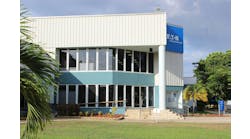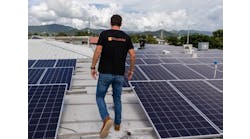An Arizona State University (ASU) project focused on bringing sustainable electricity access to remote villages in Fiji will enlist the expertise of distributed energy resource platform builder Xendee.
ASU project leaders have already assessed 300 isolated communities to come up with the most suitable 75 sites for minigrids. In addition to geospatial evaluation, the ASU group also has conducted feasibility studies and in-person community engagement for the planned Fiji minigrids.
The $40 million project is pursuing funding with the help of partners including Xendee, the Global Green Growth Institute, Comet, the Fiji government and the U.S. Trade and Development Agency.
Xendee will provide techno-economic and electrical modeling software for this project. Part of the company’s work is calculating energy potential tailored to the specific needs of each individual community, as well as the system sizing for the minigrids.
“We are honored and excited to be a part of this project that has the potential to positively impact the sustainability and lives of Fijian communities,” Xendee CEO Adib Nasle said in a statement. “Our software platform will help ensure that the energy systems are meeting the specific needs of each community, promoting efficient and cost-effective energy generation.”
The ASU Laboratory for Energy and Power Solutions (LEAPS) is leading the project. A key goal of LEAPS is to bring electricity to some of the most remote islands in the Pacific archipelago.
Minigrids, which are sometimes referred to as remote microgrids, are popular in countries with large rural or remote populations. Many minigrid projects are underway in various parts of Africa and other islands.
Fiji’s chain includes more than 330 islands, with about one-third of those permanently inhabited, according to reports. Although the nation is one of the most economically developed in the Pacific, many parts of the island chain are still at subsistence levels and lacking in direct access to electricity, particularly lower or zero-emissions resources.
As of five years ago, less than half of the nation’s grid power was produced by hydroelectric plants and at least half by diesel-powered generation, according to reports.
-- -- --
Xendee is a content session presenter, as well as one of the sponsors and exhibitors at the Microgrid Knowledge Conference happening April 22-24 in Baltimore. Learn more about "How to Optimize Microgrids for Commercial EV Charging Success" in a one-hour session beginning 2 p.m. Eastern time on Monday, April 22 at the Marriott Waterfront. Join us all three days to experience the revolution in energy at the nation's top microgrid event.








